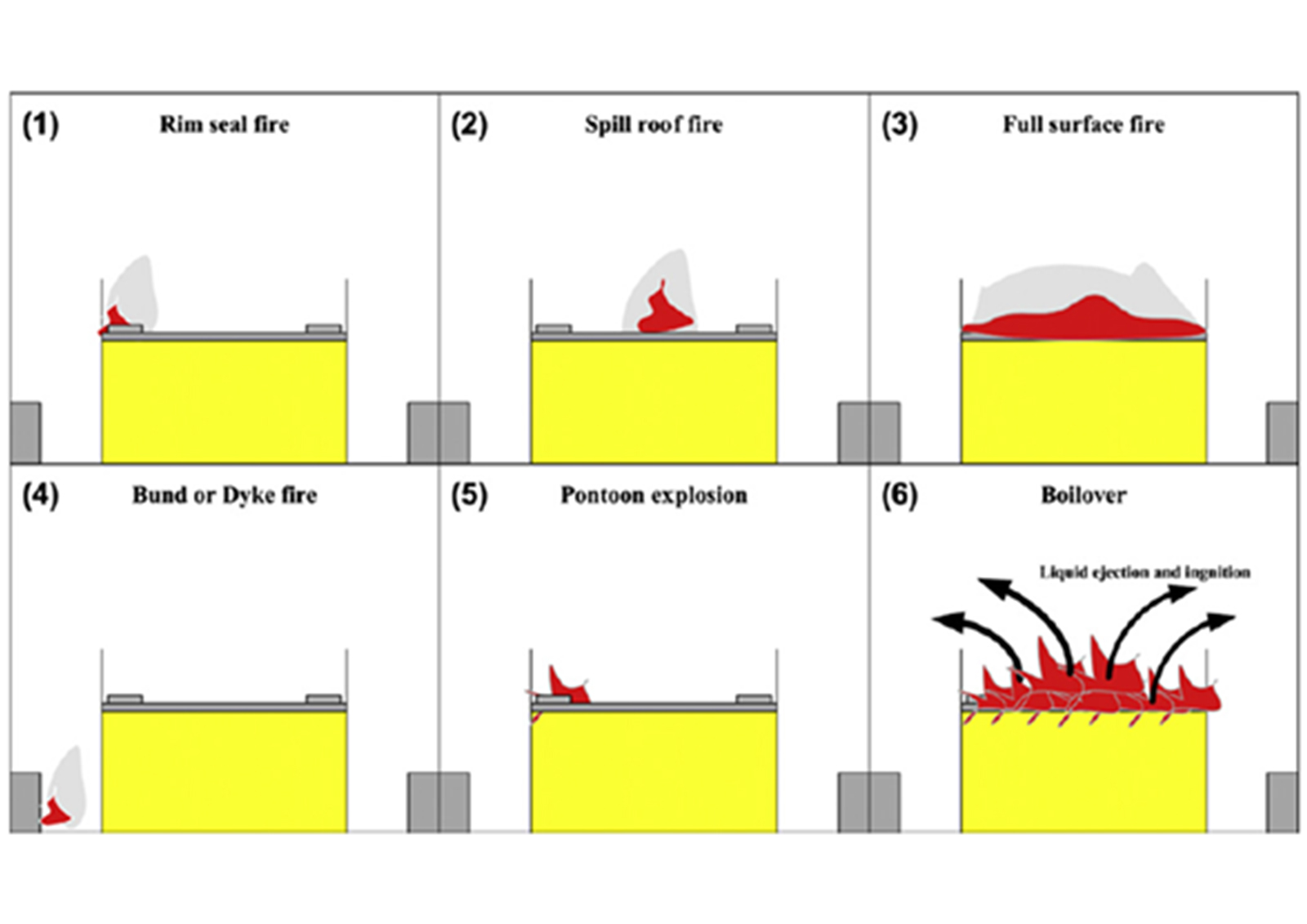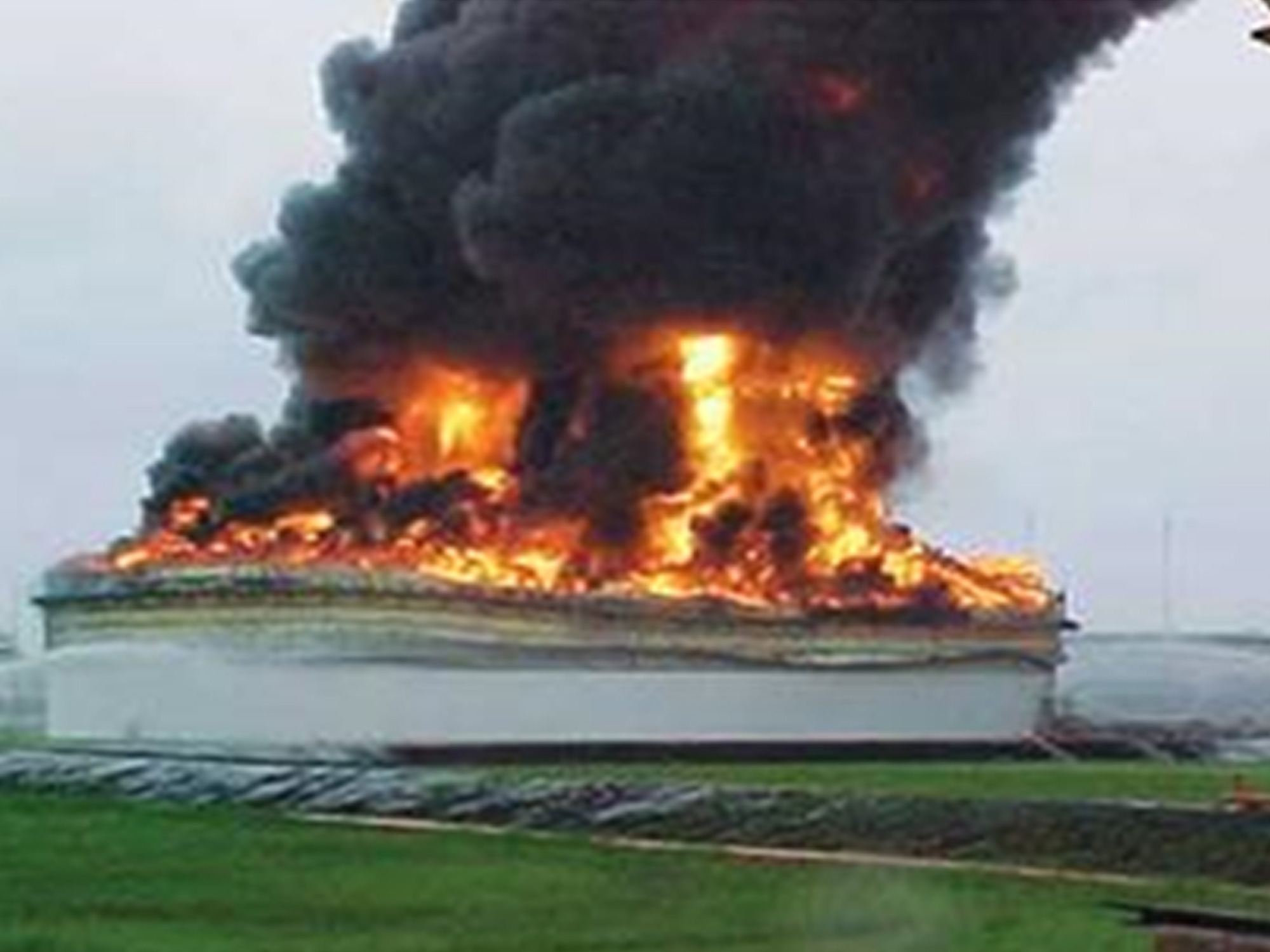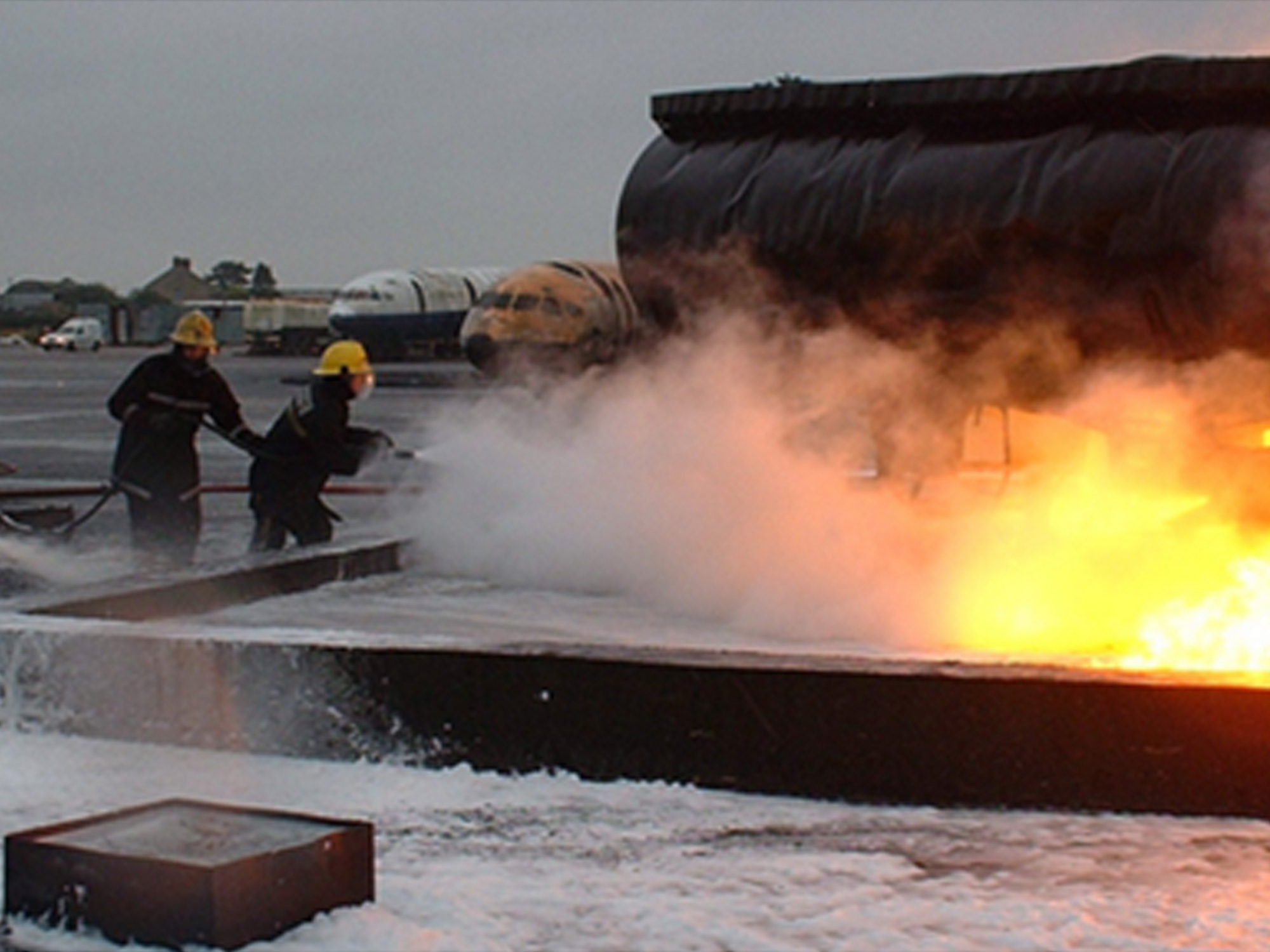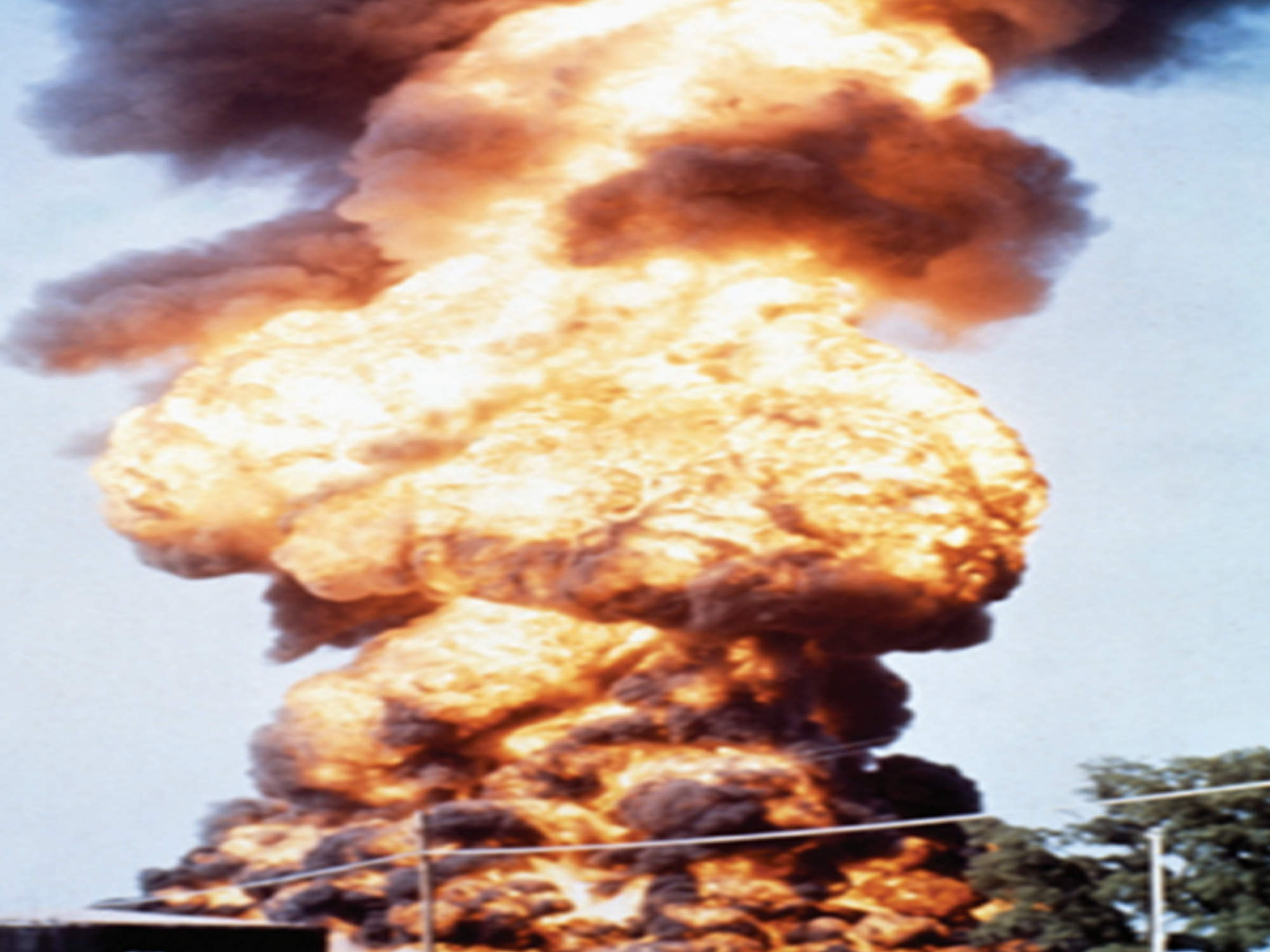The potential fire scenarios in Storage Tanks are as follows:
• Wheel gasket fire;
• Fire caused by liquid spillage on the roof;
• All surface fire;
• dyke fire (pool fire);
• Pontoon eruption;
• Boil-over;
• Jet fire (for example, due to rupture of pipes in a seismic event).
The most severe of the potential fire scenarios are all surface fire(3) and boil-over (4).
Tank fires often have a knock-on effect, causing one type to lead to another. E.g . Relatively small fires that start on the roof can lead to an entire surface fire in a tank. If all surface fire is not extinguished, it can also lead to more severe fire scenarios such as boil-over in the same tank and/or all surface fire in nearby tanks.
All Surface Fire
All surface fires are caused by the spread of smaller fires. Damage to tanks can occur when the flames of an external fire directly reach the tank wall or tank roof, or by evaporation of light components inside the tank due to high heat.
The sample entire surface fire is shown in Figure 2. All surface fire causes the walls and roof of the tank to melt. Due to the fire, people around the tank may be harmed by the high thermal radian heat. Under the influence of the wind, the direction of the fire may change causing a domino effect and may affect other storage tanks nearby.
Dyke (Pool) Fire
It is a type of fire as shown in Figure 3 that occurs inside the containment area outside the tank. A pool is formed in the storage area if there is an outflow from the tank due to any leakage from a tank, rupture of connecting pipes or valves, or overfilling. After a while, the steam from the flammable liquid pool can ignite and cause a dyke (pool) fire. With the exception of lightning, ignition sources are generally associated with some form of manual activity, eg hot work during maintenance, mechanical overheating, remote ignition, etc. emerges. The schematic representation of the dyke fire is given in Figure 3.
Boil-Over Fire
Boil-over occurs in storage tank fires where the fuel is a mixed hydrocarbon with a wide boiling range, such as crude oil. When the water, which is usually at the bottom of the storage tanks, evaporates due to the heating effect of the fire, the large volume of steam that emerges violently squirts out some of the liquid inside the tank. This causes a large amount of fuel to be burned at the top of the tank, which increases the size of the fire. In fact, the boil-over is almost like an explosion, and during boiling it creates a temporary big fire, which causes damage to the surroundings from the thermal heat radiation. Boil-over is a very dangerous accident event that can cause serious injury or even fatal injury to those near the accident, especially emergency responders.
• For a boil-over fire to occur, the following conditions must exist:
• All-surface fire must involve all or part of the surface of the liquid.
• The tank should typically contain either free water or a water-in-oil emulsion at the bottom of the tank or above the sunken roof. This is not uncommon in tanks used to store crude oil. This can occur in heavy oil storage tanks.
• The liquid should contain a wide range of boiling point components such as crude oil but not benzene.
• Water or oil-in-water (wet) emulsion bases are normally found in crude oil tanks. Water may accidentally enter the tank from firefighting efforts or the product may have layers of wet emulsion. When the hot interface reaches the water or emulsion at the bottom of the tank, the water evaporates. The expansion factor from water to a sparkling vapor mixture at 400°F is approximately 1700 times the volume of water.
The effects of a boiler-over fire are largely similar to the effect of a fireball and a small amount of burning fuel being sprayed around the tank. Some of the key features of the fireball phenomenon are the liquid mass in the tank, the fractions of the liquid mass, the fireball size, the thermal radian heat flux, and the fireball duration. In the risk analysis, the impact of this fire on the surrounding tanks (potential domino effect) and the ring around the terminal facility and those working within the facilities should be investigated. In addition, the frequency and consequences of boil-over fire should be considered in terms of fatal and serious injury thresholds in humans.




